Traduction générée automatiquement
Montrer le texte original
Montrer le texte traduit
Jacques Villon - Man- Original Etching 1949 Signed in the plate Jacques Villon (1875 - 1963) Jacques Villon was born Gaston Duchamp on July 31, 1875, in Damville, Normandy. His family is one of remarkable artistic repute; he and his three siblings Marcel Duchamp, Raymond Duchamp-Villon, and Suzanne Duchamp would all make important contributions to 20th-century art. While still a lycée student in Rouen, he began his artistic training under his grandfather, Emile Frédéric Nicolle, a shipbroker and artist. Nicolle taught Villon engraving and printmaking, and in 1891 he was the subject of one of Villon’s earliest prints. In January 1894 Villon moved in with his brother Raymond in Paris’s Montmartre neighborhood and began to study law at the University of Paris. He soon lost interest in legal studies and instead spent his time submitting drawings to various magazines and newspapers, some of which were politically oriented. Partly in order to distance his family's name from these publications, he changed his name to Jacques Villon (an homage to French medieval poet François Villon). In 1895 he began study at the Ecole des Beaux-Arts and frequented the Atelier Cormon. For almost 10 years Villon worked largely in graphic media, contributing drawings to Parisian illustrated papers and making color prints and posters. In 1903 he helped organize the drawing section of the first Salon d’Automne, which would become one of the most significant annual exhibitions in the history of modern art. His first gallery exhibition, shared with his brother Raymond, took place at Galerie Legrip, Rouen, in 1905. He studied at the Académie Julian in Paris between 1904 and 1905, painting in a Neo-Impressionist style. In 1906 Villon settled in Puteaux and began to spend more time painting; by 1910 he had devoted himself primarily to painterly pursuits. In 1911, he and Duchamp-Villon helped found the Puteaux Group, a collective of Cubist artists that held meetings in Villon’s studio; its participants included Robert Delaunay, Marcel Duchamp, Albert Gleizes, František Kupka, Fernand Léger, Francis Picabia, and others. The following year, working with the Puteaux Group, Villon named and helped mount the Salon de la Section d'Or, a seminal exhibition in the development of the Cubist movement. Villon exhibited nine paintings at the 1913 New York Armory Show, and his first solo exhibition in the United States was held at the Societé Anonyme, New York, in 1921; by the 1930s he was better known in the U.S. than in Europe. In 1932 he joined and began to exhibit with the Abstraction-Création group. An important presentation of his work was held in Paris in 1944 at the Galerie Louis Carré, from that time forward his exclusive representative. Villon received honors at a number of international exhibitions, including First Prize at the Carnegie International (1950) and Grand Prize for Painting at the Venice Biennale (1956). In 1955 he designed stained-glass windows for a cathedral in Metz, France, along with his contemporaries Marc Chagall and Roger Bissière. Villon died in Puteaux on June 9, 1963, at the age of 87.
Jacques Villon - Homme - Gravure originale 1949 Signé dans la planche Jacques Villon (1875 - 1963) Jacques Villon est né Gaston Duchamp le 31 juillet 1875 à Damville, en Normandie. Sa famille est d'une remarquable réputation artistique ; lui et ses trois frères et soeurs Marcel Duchamp, Raymond Duchamp-Villon et Suzanne Duchamp apporteront tous une contribution importante à l'art du XXe siècle. Alors qu'il était encore lycéen à Rouen, il a commencé sa formation artistique sous la direction de son grand-père, Emile Frédéric Nicolle, courtier maritime et artiste. Nicolle enseigne à Villon la gravure et l'estampe, et en 1891, il fait l'objet d'une des premières estampes de Villon. En janvier 1894, Villon s'installe avec son frère Raymond dans le quartier de Montmartre à Paris et commence à étudier le droit à l'université de Paris. Il se désintéresse rapidement des études de droit et passe plutôt son temps à soumettre des dessins à divers magazines et journaux, dont certains sont à vocation politique. En partie pour éloigner le nom de sa famille de ces publications, il a changé son nom en Jacques Villon (un hommage au poète médiéval français François Villon). En 1895, il commence à étudier à l'École des Beaux-Arts et fréquente l'Atelier Cormon. Pendant près de 10 ans, Villon a travaillé principalement dans le domaine des arts graphiques, en contribuant à la réalisation de dessins pour les papiers illustrés parisiens et en réalisant des estampes et des affiches en couleur. En 1903, il participe à l'organisation de la section dessin du premier Salon d'Automne, qui deviendra l'une des expositions annuelles les plus importantes de l'histoire de l'art moderne. Sa première exposition en galerie, partagée avec son frère Raymond, a lieu à la Galerie Legrip, à Rouen, en 1905. Il étudie à l'Académie Julian à Paris entre 1904 et 1905, en peignant dans un style néo-impressionniste. En 1906, Villon s'installe à Puteaux et commence à passer plus de temps à peindre ; en 1910, il se consacre principalement à des activités de peintre. En 1911, il participe avec Duchamp-Villon à la fondation du groupe Puteaux, un collectif d'artistes cubistes qui se réunit dans l'atelier de Villon. Parmi ses participants, on compte Robert Delaunay, Marcel Duchamp, Albert Gleizes, František Kupka, Fernand Léger, Francis Picabia, etc. L'année suivante, en collaboration avec le groupe Puteaux, Villon a nommé et aidé à monter le Salon de la Section d'Or, une exposition qui a fait date dans le développement du mouvement cubiste. Villon expose neuf tableaux à l'Armory Show de New York en 1913, et sa première exposition personnelle aux États-Unis se tient à la Société anonyme de New York en 1921 ; dans les années 1930, il est plus connu aux États-Unis qu'en Europe. En 1932, il rejoint et commence à exposer avec le groupe Abstraction-Création. Une importante présentation de son travail a lieu à Paris en 1944 à la Galerie Louis Carré, qui est désormais son représentant exclusif. Villon a été honoré lors de plusieurs expositions internationales, dont le premier prix au Carnegie International (1950) et le grand prix de peinture à la Biennale de Venise (1956). En 1955, il conçoit des vitraux pour une cathédrale de Metz, en France, avec ses contemporains Marc Chagall et Roger Bissière. Villon meurt à Puteaux le 9 juin 1963, à l'âge de 87 ans.

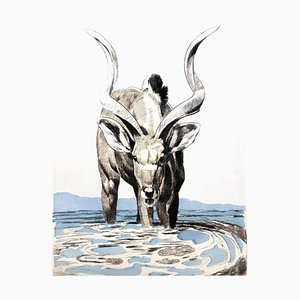
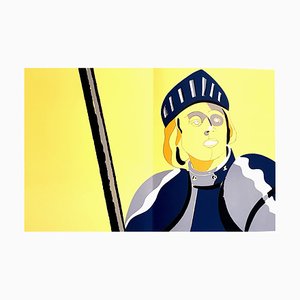
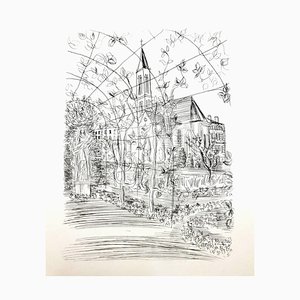
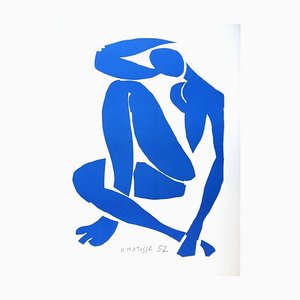
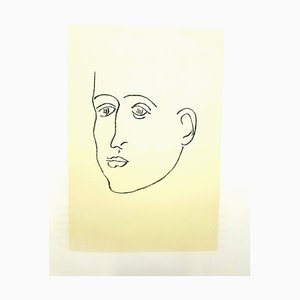
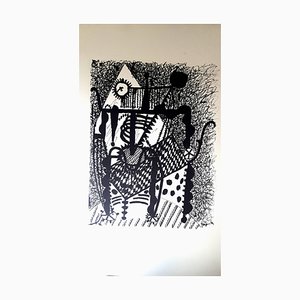
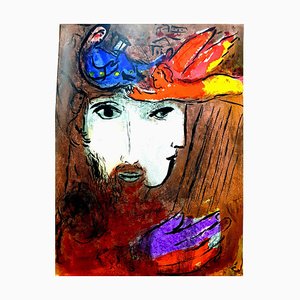
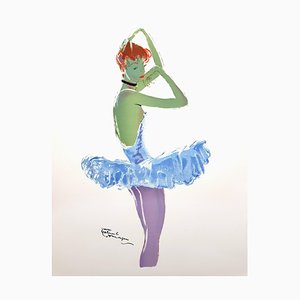
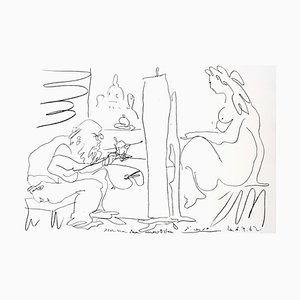
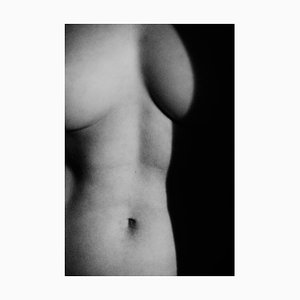
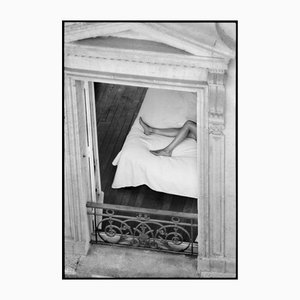
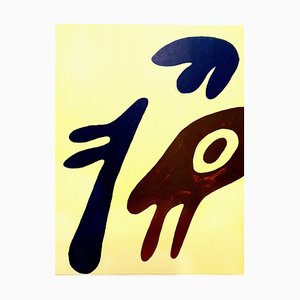
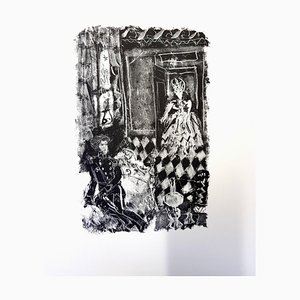

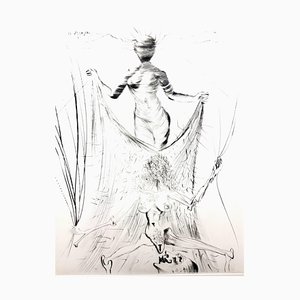
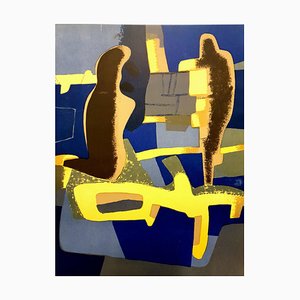

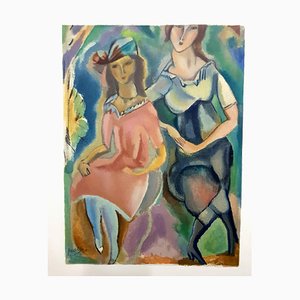
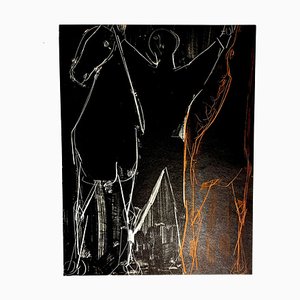
Contactez-nous
Faire une offre
Nous avons remarqué que vous êtes nouveau sur Pamono !
Veuillez accepter les Termes, Conditions et Politique de Confidentialité
Contactez-nous
Faire une offre
Vous y êtes presque!
Pour suivre votre conversation sur la plateforme, merci de compléter votre enregistrement Pour procéder avec votre offre sur la plateforme, veuillez compléter l’enregistrement.Envoyé!
Merci pour votre message, un membre de notre équipe vous contactera rapidemment
Si vous etes un professionnel du design, merci de vous inscrire ici pour pouvoir profiter de bénéfices exclusifs